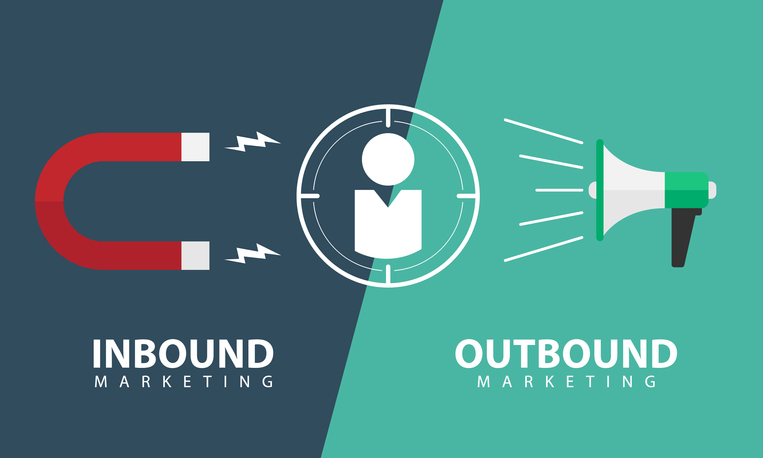If your digital marketing agency is looking ahead to 2023, and planning a digital marketing strategy for either yourself or a client, you need to consider whether to use inbound or outbound marketing, or a combination of both. But which is best?
In this article we go back to basics and explain:
- What is inbound and outbound marketing?
- Examples of inbound and outbound marketing
- Advantages and disadvantages of inbound and outbound marketing
What is inbound and outbound marketing?
-
Inbound marketing
Inbound marketing is also known as pull marketing.
Inbound marketing aims to attract and engage with potential customers who are already interested in the kind of product or service offered by your business. By gently building brand awareness and nurturing potential leads, the aim is to nudge them step by step towards conversion.
-
Outbound marketing
Outbound marketing is also known as push marketing.
Outbound marketing aims to get your product or service in front of people without them having asked for it – and perhaps don’t even realise that a product or service such as yours exists. If your nets are cast far and wide, eventually you will make a catch.
Examples of both types of marketing
-
Inbound marketing
The two key elements of inbound marketing are search and content.
-
Search
Inbound marketing relies on consumers finding you. So it’s vital to ensure that your website is fully optimised for current search terms and that the landing pages are immediately relevant to the search query.
Another element of search is paid search, so that your ad catches the attention of consumers searching for your kind of product or service.
-
Content
There should be relevant and engaging content at every stage of the sales funnel. Some of the most popular types of content are:
- Social media
- Opt-in emails
- Newsletters
- Blogs
- Articles
- Infographics
- White papers
- Quizzes
- Polls
- Surveys
-
Outbound marketing
Outbound marketing is the longest established – and in many ways more traditional – type of marketing. Examples include:
- TV & radio ads
- Billboards
- Posters
- Display ads
- Leaflets
- Events such as trade shows and seminars
- Mailshots
- Cold emailing
- Cold calling
Also see our article Old fashioned marketing techniques that still work for a few more ideas on outbound marketing.
Advantages/disadvantages of both types of marketing
-
Inbound marketing
Some of the main advantages of inbound marketing are:
- Relatively low cost for the potential numbers of leads reached.
- Global potential, but also any specific demographic can be targeted by relevant messaging.
- Website analytics enable the tracking of audience behaviour and response.
The main caveat to all the above is that inbound marketing is initially dependent on the consumer identifying their need for a product or service, making the effort to look for you, and being successful in finding you.
-
Outbound marketing
Some of the main advantages of outbound marketing are:
- It is a useful tool for building brand awareness.
- It highlights the potential need for a product or service that the consumer may not have realised was there.
- It can be particularly effective for local or specific businesses.
One of the main disadvantages of outbound marketing is that it can be expensive. Whilst it can reap great rewards, it can be like looking for a needle in a haystack. And bear in mind that hundreds of other businesses are also trying to find that same needle, so consumers may get a little weary of being sold to. In particular, online outbound marketing efforts can be thwarted by tools such as ad blockers and spam filters.
We hope that this brief guide has provided useful clarification for your digital marketing agency on:
- What is meant by inbound and outbound marketing?
- Examples of inbound and outbound marketing
- Advantages and disadvantages of inbound and outbound marketing
As with any other aspect of digital marketing strategy, you need to base your decision on which to use on your business goals, available resources and budget. You will also need to continually evaluate the effectiveness of your strategy by analysing available data, analytics, and of course ROI. And tweak things as you go.
We will explore many of the above elements of inbound and outbound marketing over the next few months so do visit us again here soon at Xcite Digital.
